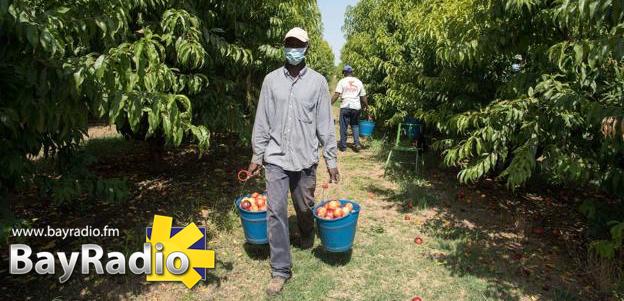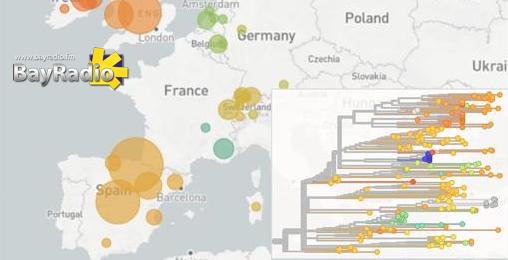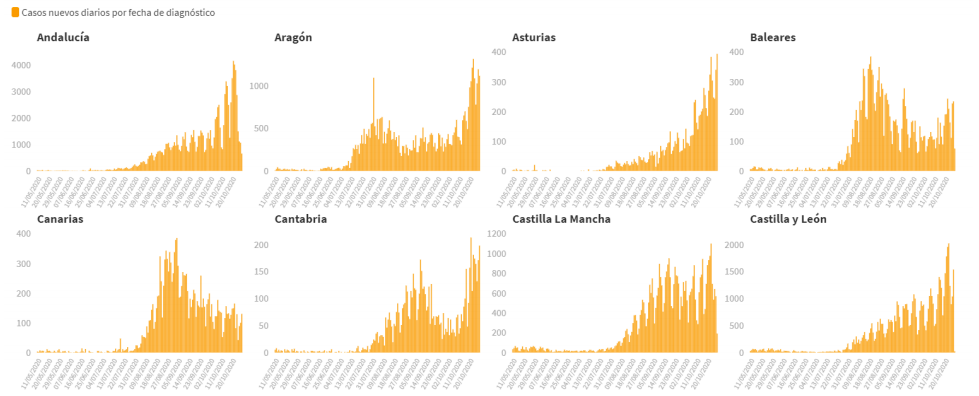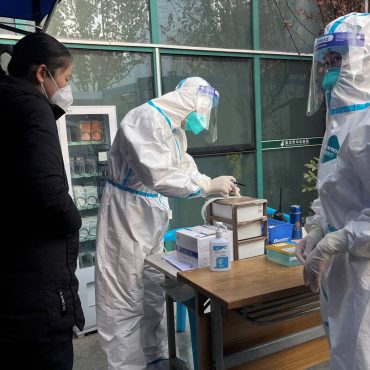-
 play_arrow
play_arrow
BayRadio Listen Live Broadcasting in Spain
Northern Spain blamed for COVID-19 mutation behind ‘90%’ of Europe’s second wave


A Spanish-Swiss study has suggested a COVID-19 mutation that occurred among seasonal workers in northern Spain in June could be behind 40-90% of Europe’s second wave infections.
Spain could be the origin of Europe’s second wave of COVID-19 this winter after researchers traced a significant mutation back to the Iberian Peninsula.
The study – which has not yet been peer-reviewed – suggested the mutation occurred in June and could have been carried by international travellers across Europe.
The SeqCOVID team is made up of crack investigators from 55 institutions across Spain – read more about them in English here.
The team have received 1.75€ million in funding from Spain’s main health research centre, the Madrid-based Instituto de Salud Carlos III.
According to their report, a mutation of SARS-CoV-2 began showing up in Spain at the beginning of summer – specifically in badly-hit regions of Aragón and Cataluña.
The mutation spread to the Valencian Community and then caused 90% of new cases in Spain since the summer.
This same strain has now been found in the majority of new cases in 12 European countries, including: Switzerland, Ireland, the UK, Norway, Lithuania, the Netherlands and France.
Data from the UK shows 90% of cases there were caused by the new mutation. The variant was found in 80% of Spanish cases, 60% in Ireland, and between 40% in Switzerland and the Netherlands.
Researchers said the mutation could have been dispersed by ‘tourists’ and ‘travellers’ across Europe.
Lead collaborating author of the study, Swiss Dr Emma Hodcroft of the University of Basel, said: “From the spread of 20A.EU1, it seems clear that [virus prevention] measures in place were often not sufficient to stop onward transmission of introduced variants this summer.”
She said better airport testing could have halted the spread.
Dr Hodcroft added the mutation showed no greater impact on clinical outcome or lethality.

Mutation origin
The mutation has been called ’20A.EU1′.
Tests taken back in June show the variant began in two outbreaks among seasonal agricultural workers in Aragón and Cataluña.
According to researchers, these ‘superspreader’ events sent the virus around Spain just before the opening up of borders and relaxing of restrictions when the state of alarm ended, on June 20th.
“It is perfectly possible the virus had been circulating in the area and that the outbreak of the seasonal workers became an amplifier,” Iñaki Comas from the Universidad de Valencia, and co-author of the study, told national paper ABC.
“This is an important message: we failed to protect vulnerable populations, who had very poor working and living conditions; if we had, we would have avoided amplifying this variant.”
Many seasonal workers in Aragón working in agriculture and livestock farming suffer ‘exploitation’ in the workplace – as Antonio Ranera, head of the migration department in Aragón’s UGT worker’s union, told el Heraldo.
The majority come from subsaharan Africa and Central and South America. 50% are aged 18-35 and more than half have no legal papers, meaning they are afraid or unable to complain.
“The men work in the fields and women in domestic employment,” Ranera said
Ranera estimated some 3,000 workers are suffering extreme exploitation, with 167,000 vulnerable workers across the autonomous community.
The outbreaks among these communities quickly rocketed Aragón’s accumulated incidence to the highest in Spain for most of the summer.
According to COVID-19 figures released by Spain’s central Ministry of Health on Thursday (29th October) Aragón is still the third worst-affected region in Spain.
It shows 984 cases per 100,000 inhabitants over the last 14 days, with 46% of ICU beds for coronavirus patients taken up.

Written by: BayRadio News
Similar posts
Recent Posts
- Robotic Surgery for Prostate Cancer: What Is Radical Prostatectomy and How Does the Da Vinci Robot Improve It
- What Is Fibromyalgia? Symptoms and Treatments of an Invisible Illness That Requires Specialized Attention
- AMASVISTA Glass: 10 reasons to choose SUNFLEX glass curtains
- Robotic Surgery, Immunotherapy and Comprehensive Care Take Centre Stage at Pancreatic Cancer Conference at Quirónsalud Torrevieja
- Robotic Surgery Against Ovarian Cancer: Greater Precision, Less Pain and Faster Recovery

Ctra. Cabo La Nao, CC La Nao, Local 6 03730 Javea, Alicante, Spain
Advertise with us
Do you have a business in Spain? Do you provide a service to the expat community in Spain? Would you like your message to reach over 500.000 people on a weekly basis?
BayRadio is a community orientated radio station offering fantastic content to our many listeners and followers across our various platforms. Contact us now and find out what Bay can do for you!
Our business is helping your business grow.
BAY RADIO S.L. © 2024. ALL RIGHTS RESERVED. WEB DESIGN BY MEDIANIC







